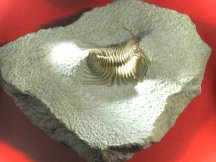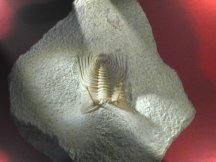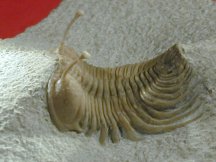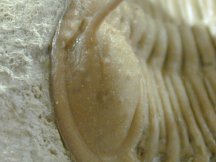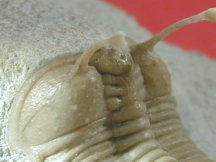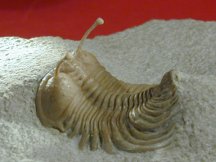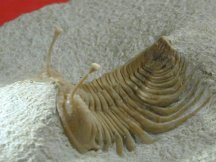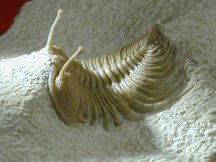Cybele bellatula
Trilobite Order Phacopida, Family Encrinuridae Russian Phacopid Trilobite
Geological Time: Lower Ordovician
Size: 45 mm
Fossil Site: Kunda Level deposits of the Wolchow River region near Saint Petersburg, Russia
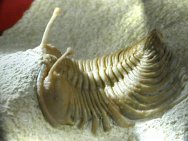 Coming
from the Lower Ordovician Kunda level deposits of the Wolchow River region
near
Saint Petersburg, Russia, this is an example of the unusual trilobite
Cybele bellatula, a member of the Order Phacopida, Family Encrinuridae.
Riccardo
Levi-Setti coined
the term "Butterflies of the Sea" for trilobites, and this one fits
that apellation to a T. The spines may have served a Coming
from the Lower Ordovician Kunda level deposits of the Wolchow River region
near
Saint Petersburg, Russia, this is an example of the unusual trilobite
Cybele bellatula, a member of the Order Phacopida, Family Encrinuridae.
Riccardo
Levi-Setti coined
the term "Butterflies of the Sea" for trilobites, and this one fits
that apellation to a T. The spines may have served a  "snowshoe" function,
keeping the trilobite near the surface of an unstable bottom, perhaps with the
eyestalks exposed to search for predator and prey alike. "snowshoe" function,
keeping the trilobite near the surface of an unstable bottom, perhaps with the
eyestalks exposed to search for predator and prey alike.
Cybele bellatula is a small trilobite (maximum size about 45 mm) with numerous interesting morphological features: deep, thin lateral furrows; high eye-stalks, exceeding in length the cephalon, with extremely small visual surface; eye-stalks that are about 1/64th inch diameter; glabella covered with small tuberkels; etc., see pics. This older Ordovician trilobite also occurs in Sweden and Norway. Cybele - Mother Earth Goddess - ancient Oriental and Greco-Roman deity that represented Gaia, the deified earth. Aso see: Russian Phacopid Trilobites |
